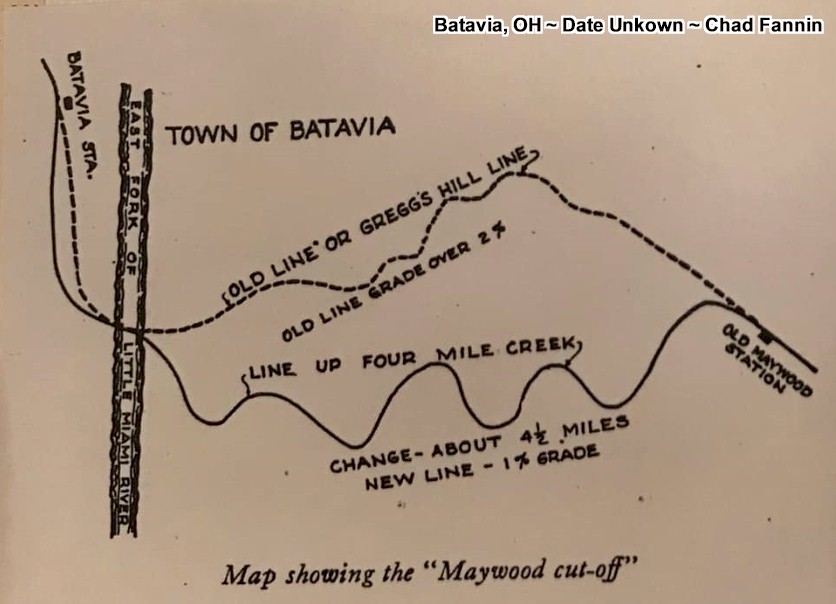|
|
|
Return To Gallery Menu
|
| |
|
Maywood Cut Off Map
|

|
Posted to History of the Peavine Railroad Facebook Group by Chad Fanning, August 8, 2019. Description from post.
The Maywood cut-off
For 20 years after 1877, trains being ran on the Peavine were slowed down by the ruling grade at Greggs Hill. This stretch after crossing the East Fork of the Little Miami River going east and ascending to Maywood station presented a 2% grade and restricted the size of trains going up to 5 or 6 loaded fright cars for that time period, not to mention the westward trip down hill which required breaks to be used that were crude by today’s standards. This prompted the C P & V in 1896 to start building a new line between the bridge and Maywood station following along Four Mile creek and presenting a lower 1% grade making it much easier for trains to be handled and with more cars, a win win for the RR. Of course smaller trains on grades was one answer to the problem of steep grades, doubling over a hill was another. Basically you cut the train in half leaving the rear section at the bottom of the hill and taking the front half over the grade, drop it and return for the rear half, then reassembling the train on the other side of the hill, which was very time consuming. The new Batavia hill grade was still steep at 1% but it was no longer the ruling grade. The new ruling grade was now at Irvington Hill between Peebles and Lawshe. This hill was required by the RR to be doubled over by all full tonnage trains. Lots of stories here about doubling but a lot of times they could run smaller tonnage trains and more locomotives. It was very common to see double headers comprised of 2-8-0 class M’s or 2-6-6-2 class Z’s pulling trains on the Peavine in the teens and 20’s. The grades and curves of this line compared to any class 1 mountain railroad in service during its time. Let’s not forget about Bond Hill on the Pennsy, another troubling hill for N&W crews taking trains on into Cincinnati over PRR trackage rights. Here’s a drawing of the Maywood cut-off made by Assistant Chief Engineer of the Scioto division Charles Armstrong who retired in 1942. He worked for the N&W for 50 years hiring on as a engineering department messenger in 1889 working in Roanoke.
Chad Fannin
8-8-19
|
| |
|
Location:
Batavia, OH
|
Date: 1/1/1900
|
|
Source:
Chad Fannin Personal Collection
|
|
Photo ID: 2033
|
|
Photo Link:
Click Here To See Original
|
|
Categories:
Peavine Documents |
Mile 24 - Batavia |
|
|
|
|
|
|
|
